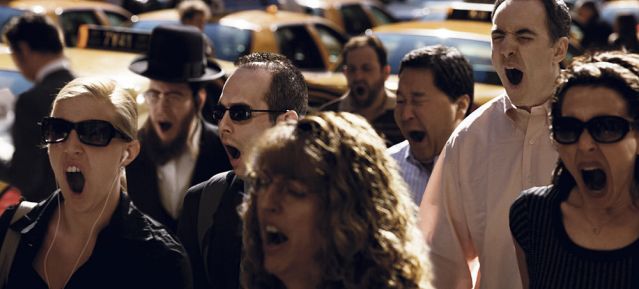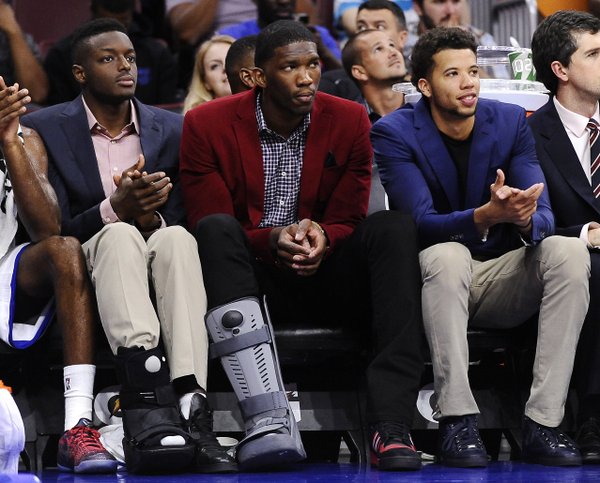Look at this picture:

Did you yawn at all? (Let me know in the comments section!)
Why does it seem like we yawn after we witness other people yawning? Is it because seeing other people yawn triggers responses in the brain to make us a yawn? Is there a sort of mechanism for the contagious yawning phenomenon? Let us explore.
This study published by the Duke Center for Human Genome Variation from Duke University attempted to figure out the causes of contagious yawning through the use of measurable variables such as empathy, emotional contagion, circadian energy rhythms, and sleepiness to name a few. 328 volunteers participated in this study. First, they were required to fill out questionnaires that measured 15 different variables such as how susceptible they are to falling asleep in certain situations, how empathetic they feel towards others, and even their age. They were then required to watch a 3 minute yawning video to try to trigger their yawning. The number of yawns were recorded for each participant. The results showed that 266 out of the 328 subjects yawned at least once. Researchers concluded from the results that contagious yawning is “not strongly related to variables like empathy, tiredness and energy levels (Duke Medicine).” In other words, the researchers are not saying that yawning cannot be caused by empathy, tiredness, and energy levels. Simply, there is not enough compelling evidence found in the results to rule that those factors do have an impact in contagious yawning. Remember, the absence of evidence does not mean that there is evidence of absence.
However, there was one variable that did stand out in the results. They found in some small instances that the amount of yawning decreased with age. However, age only accounted for 8% of the variation in the results which means that the rest of the variation could be correlated with any of the variables they tested for. There was not enough evidence to prove that age had a factor in contagious yawning.
So the study by Duke concluded that the reasons for contagious yawning are unclear. The study showed that a large majority of people (266 out of 328, or 81%) did yawn after seeing the video (Bartholomew). However, there are some flaws to this study. Before the video was shown, the participants were told a brief description about contagious yawning. This could have influenced the participants to act a certain way, such as trying not to yawn or yawn as much as they can. Even though yawning is a non voluntary action. The researchers can’t possibly determine if subjects’ yawns were real or fake.
Even though some may find this phenomenon to be cool, there are others out there that are wondering why we should be wasting our time with this? Similar to the problem with wrinkly fingers we discussed in class, why should we spend the time/resources to figure out why yawning is contagious? Well we learned that fingers tend to wrinkle up in shorter amounts of time for people with cystic fibrosis and that further research can explore that connection and possibly find out more about cystic fibrosis. For people with autism or schizophrenia, they are less susceptible to yawning when others yawn. So further research can shed light on these types of illnesses and how they affect the human body (Duke Medicine).
The Duke study emphasizes that there are not enough studies done to show which factors have an impact on contagious yawning. Most studies that were done to try to explain the causes of contagious yawning were either observational or just based on theory. I think there is not enough evidence to conclude anything at this point. But I do believe that the Duke study is very credible due to its experimental design. One way that I think they could have improved on the study is by focusing on hard end points such as physical activity/physiological changes in the brain. A replication of studies should be done to validate if there are factors that affect contagious yawning or validate if there isn’t enough evidence.
Picture source: https://www.psychologytoday.com/blog/the-athletes-way/201403/why-is-yawning-so-contagious





 Picture source: http://www.inquisitr.com/1911883/what-happens-when-you-die-out-of-body-and-near-death-experiences-are-real-claims-heart-attack-study/
Picture source: http://www.inquisitr.com/1911883/what-happens-when-you-die-out-of-body-and-near-death-experiences-are-real-claims-heart-attack-study/




